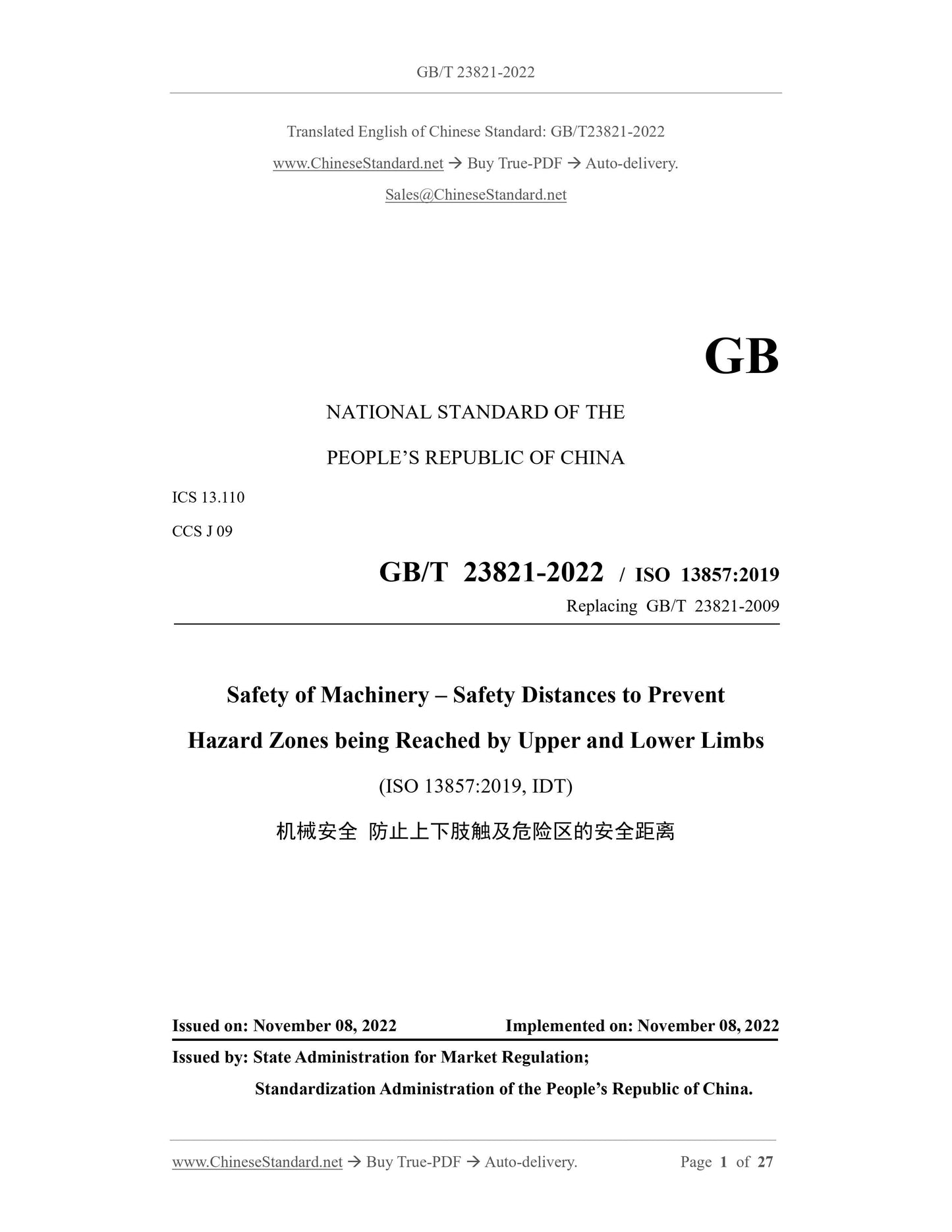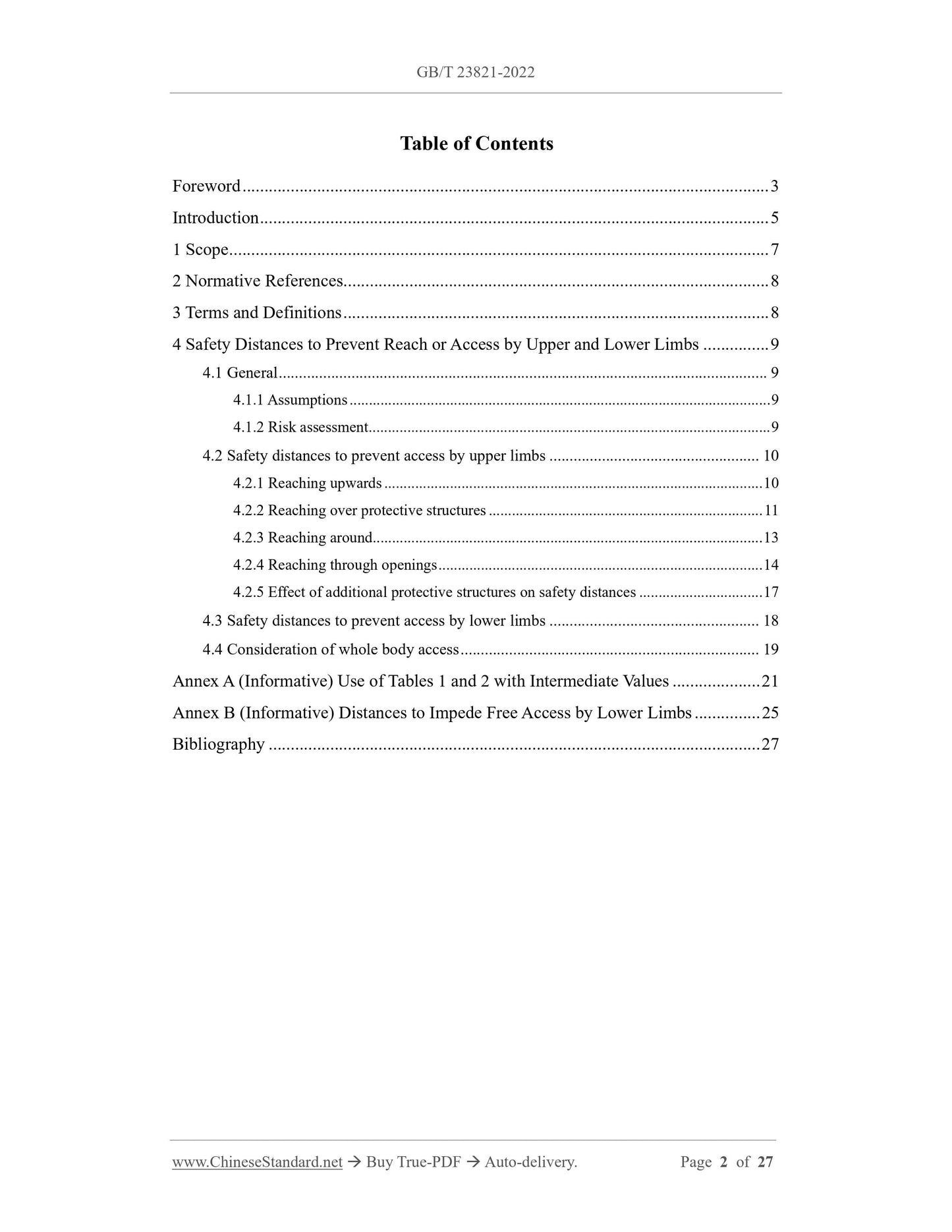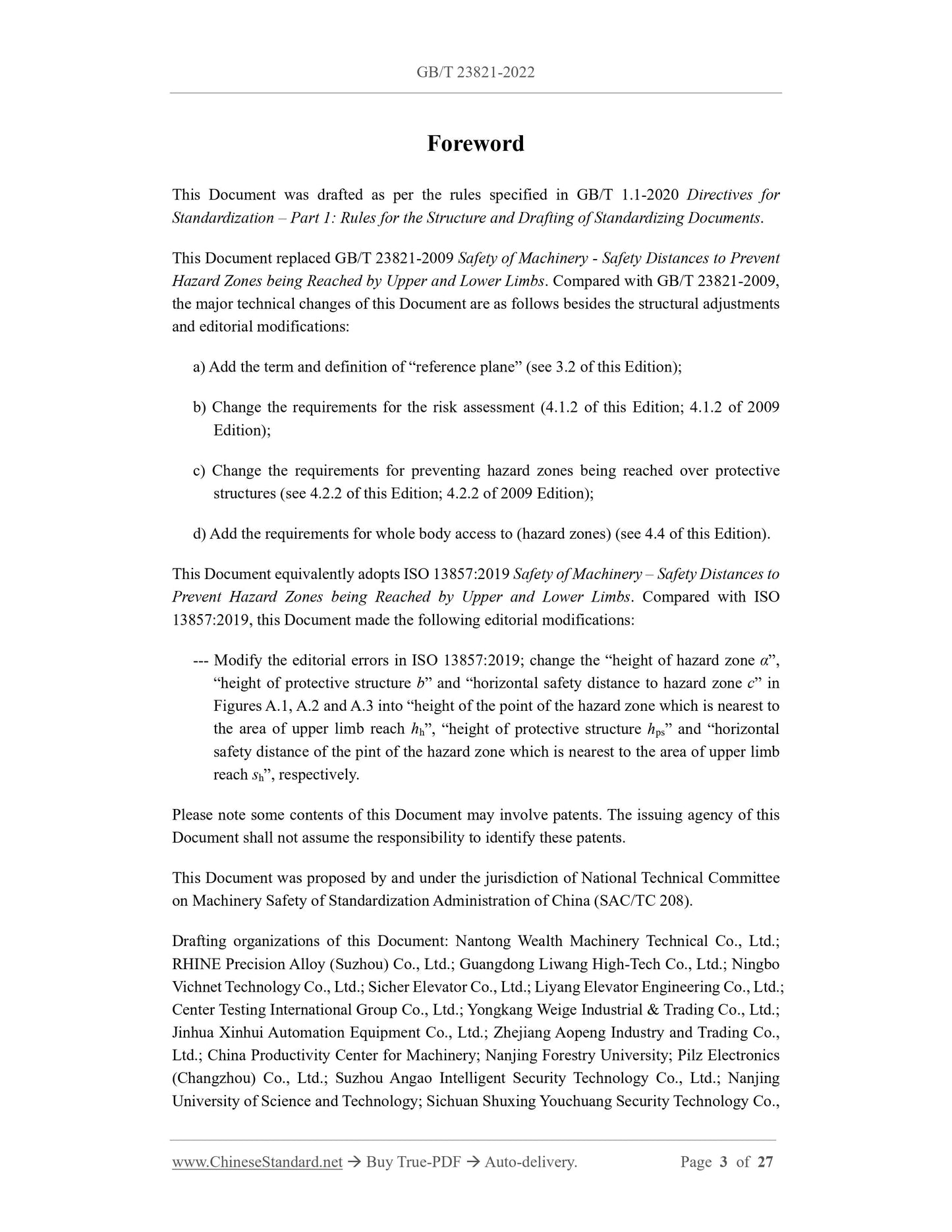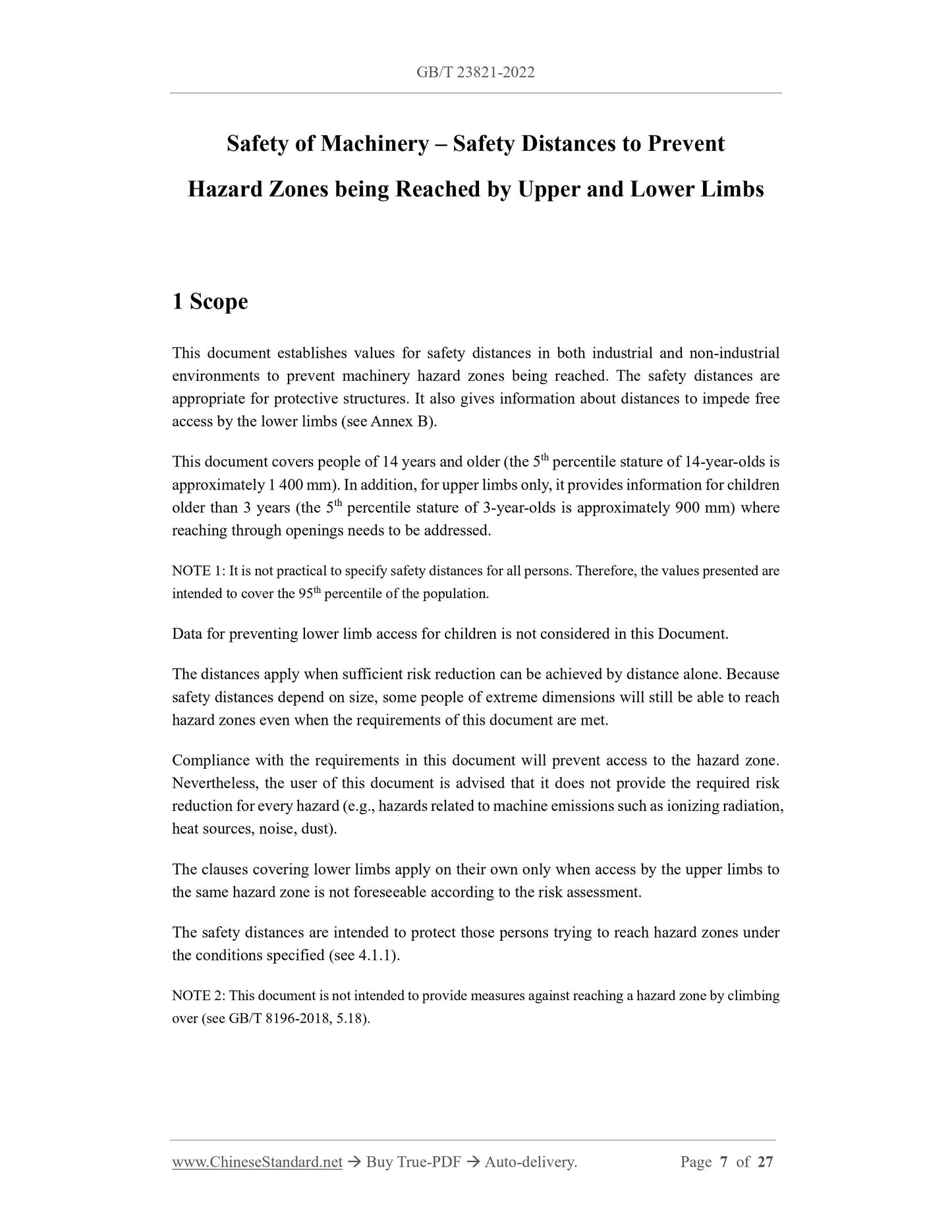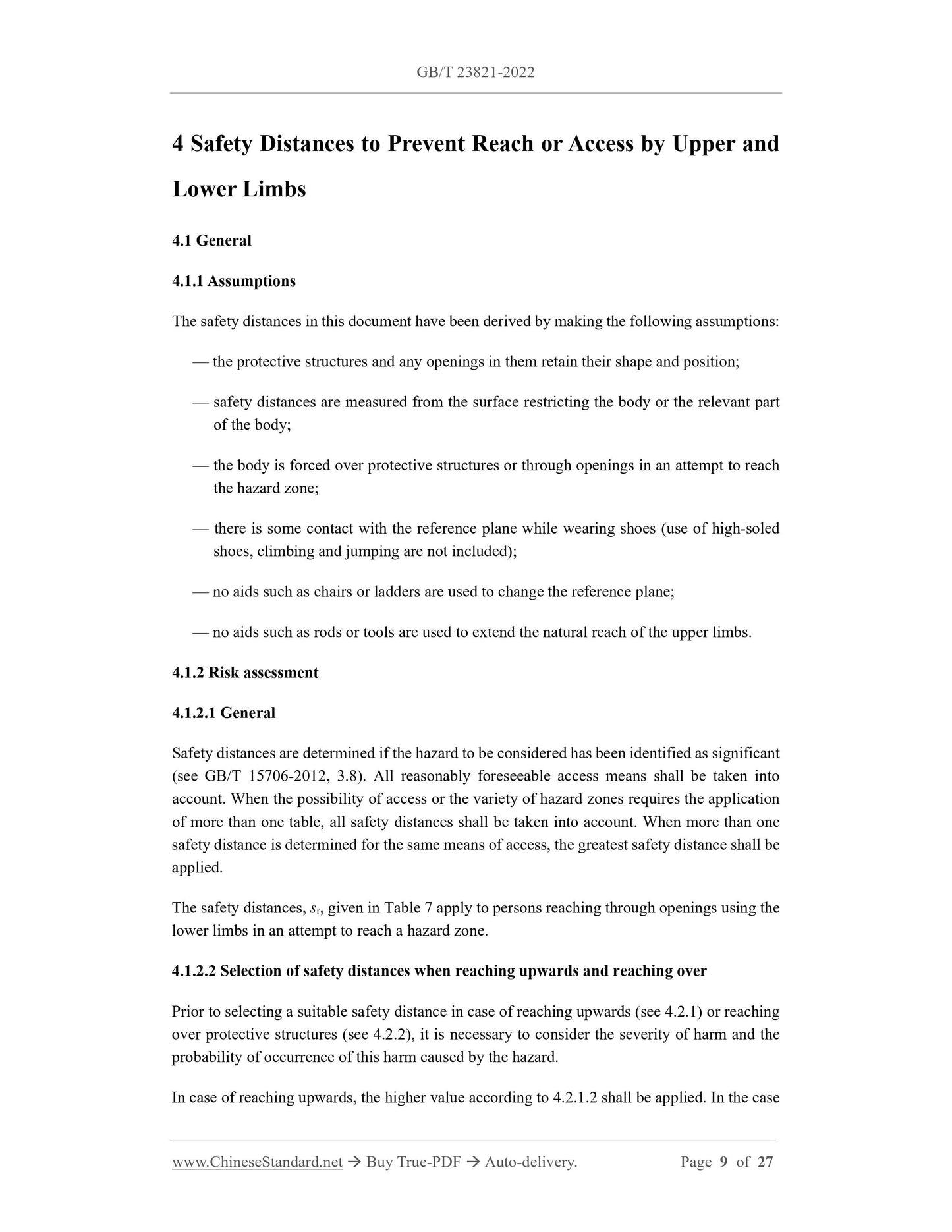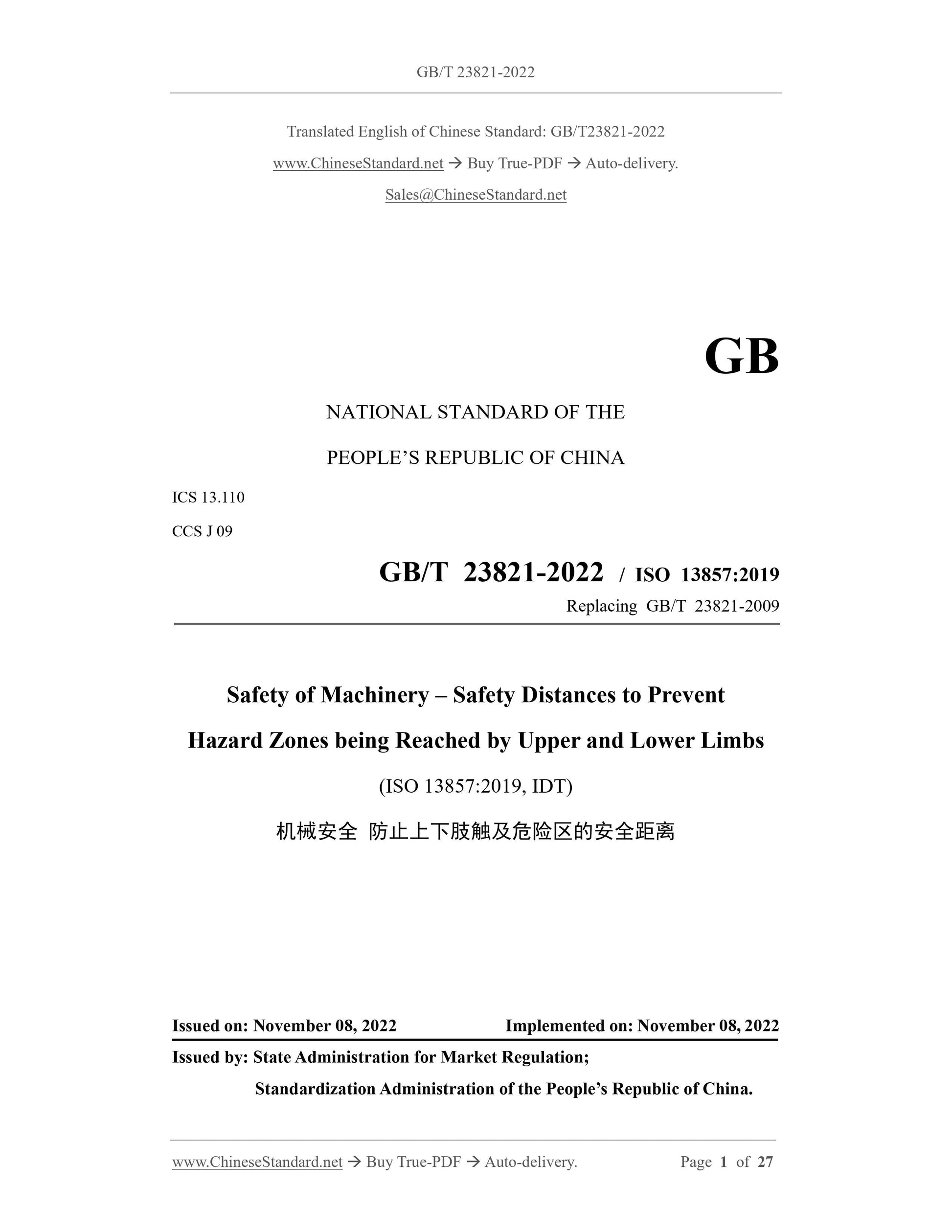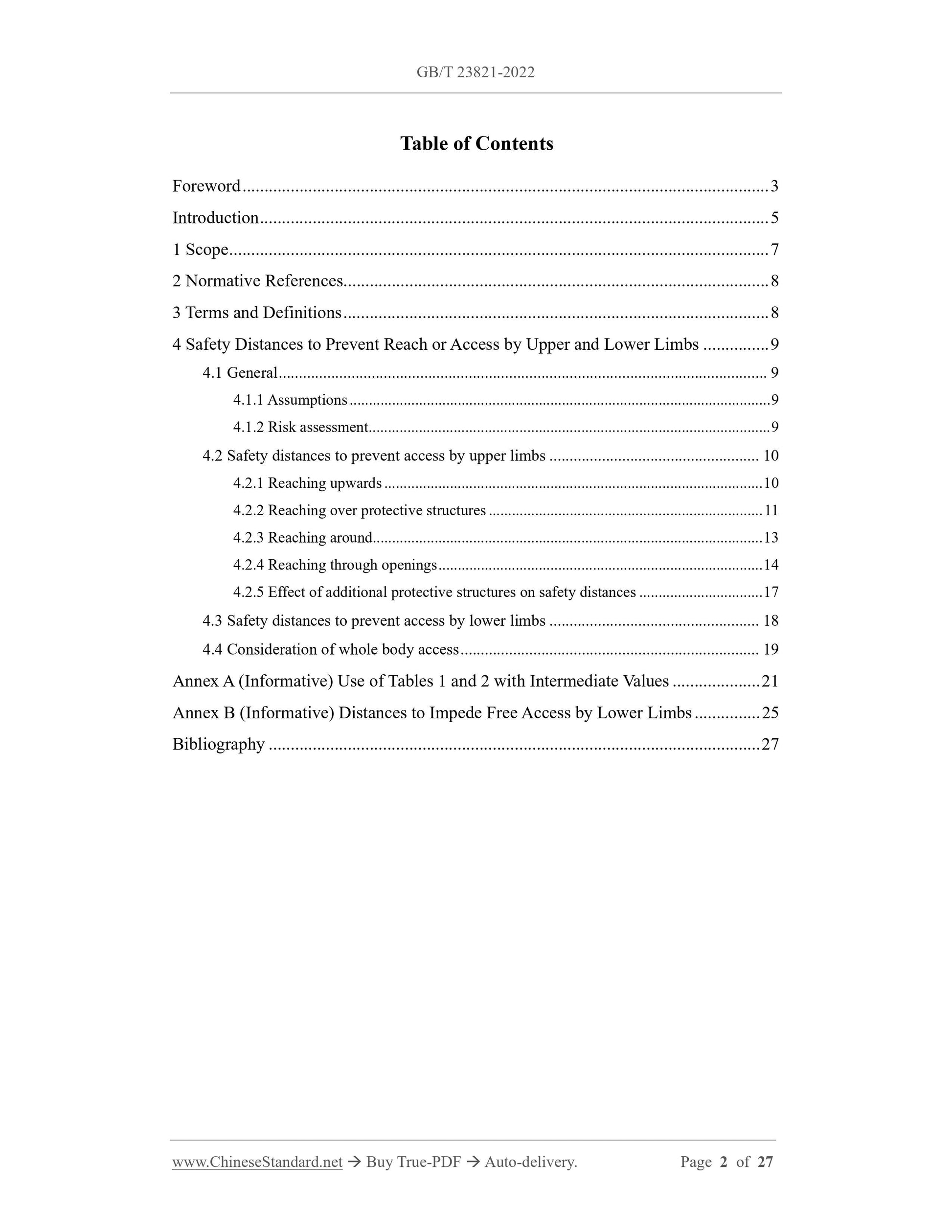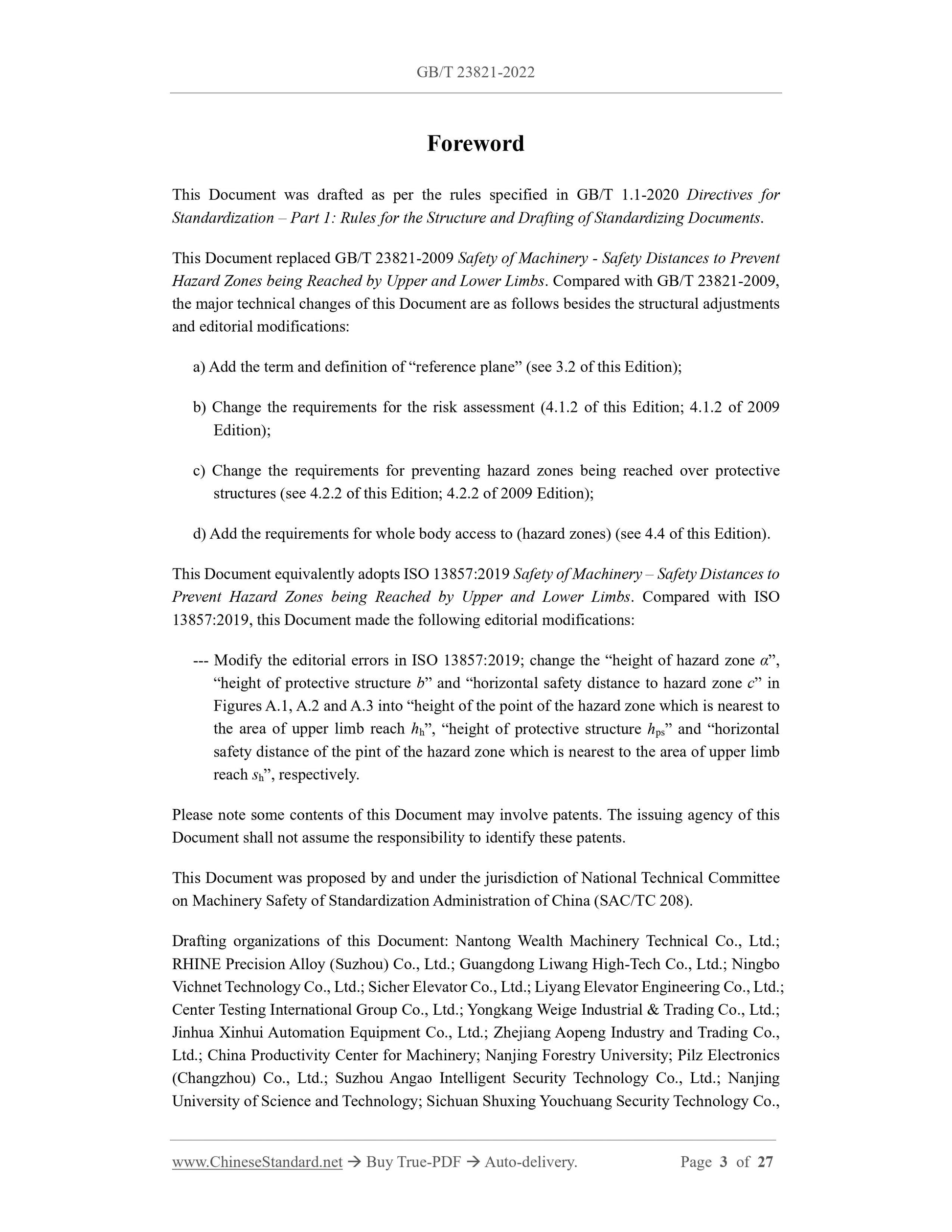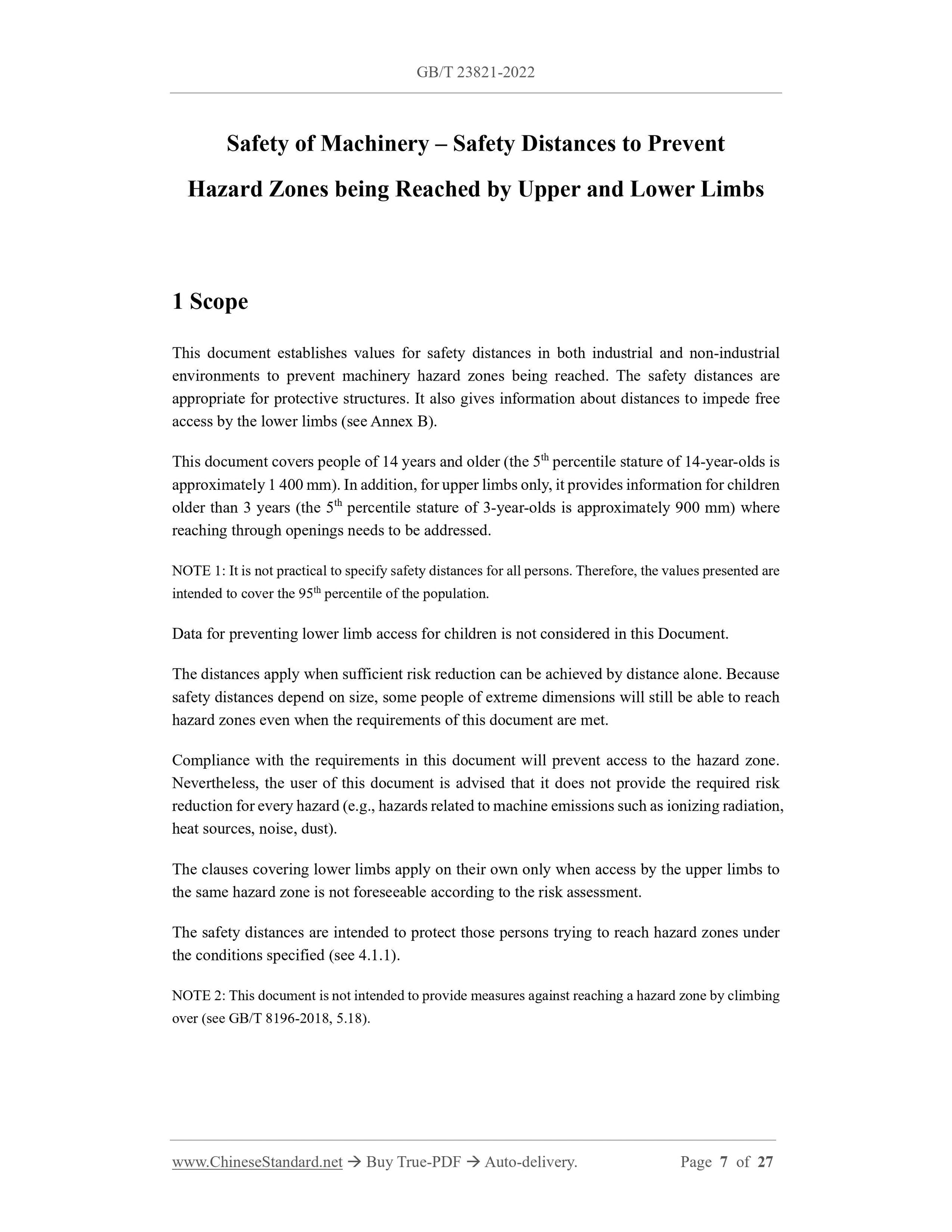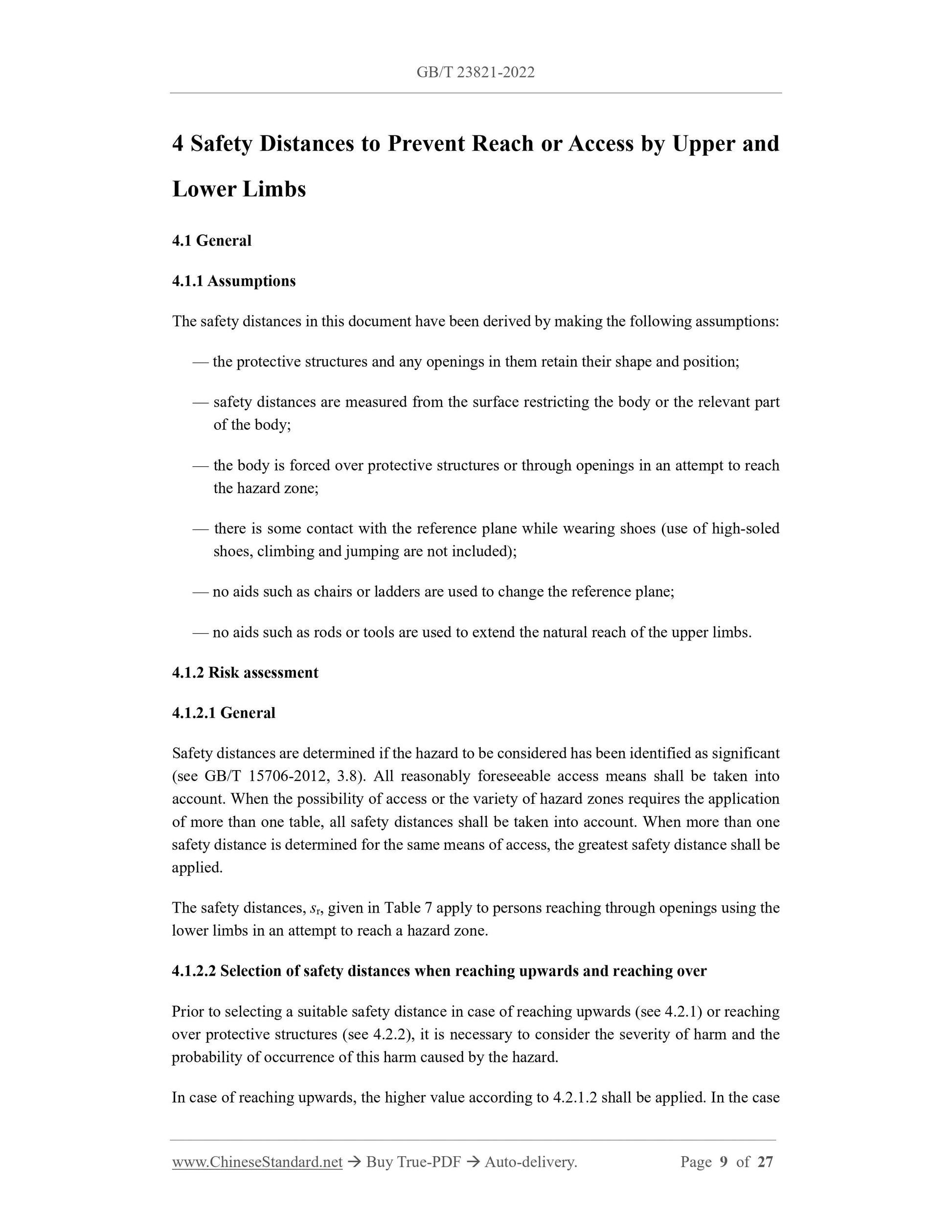1
/
of
5
www.ChineseStandard.us -- Field Test Asia Pte. Ltd.
GB/T 23821-2022 English PDF (GB/T23821-2022)
GB/T 23821-2022 English PDF (GB/T23821-2022)
Regular price
$295.00
Regular price
Sale price
$295.00
Unit price
/
per
Shipping calculated at checkout.
Couldn't load pickup availability
GB/T 23821-2022: Safety of machinery - Safety distances to prevent hazard zones being reached by upper and lower limbs
Delivery: 9 seconds. Download (and Email) true-PDF + Invoice.Get Quotation: Click GB/T 23821-2022 (Self-service in 1-minute)
Newer / historical versions: GB/T 23821-2022
Preview True-PDF
Scope
This document establishes values for safety distances in both industrial and non-industrialenvironments to prevent machinery hazard zones being reached. The safety distances are
appropriate for protective structures. It also gives information about distances to impede free
access by the lower limbs (see Annex B).
Basic Data
| Standard ID | GB/T 23821-2022 (GB/T23821-2022) |
| Description (Translated English) | Safety of machinery - Safety distances to prevent hazard zones being reached by upper and lower limbs |
| Sector / Industry | National Standard (Recommended) |
| Classification of Chinese Standard | J09 |
| Classification of International Standard | 13.110 |
| Word Count Estimation | 24,222 |
| Date of Issue | 2022-11-08 |
| Date of Implementation | 2022-11-08 |
| Older Standard (superseded by this standard) | GB/T 23821-2009 |
| Issuing agency(ies) | State Administration for Market Regulation, China National Standardization Administration |
Share
